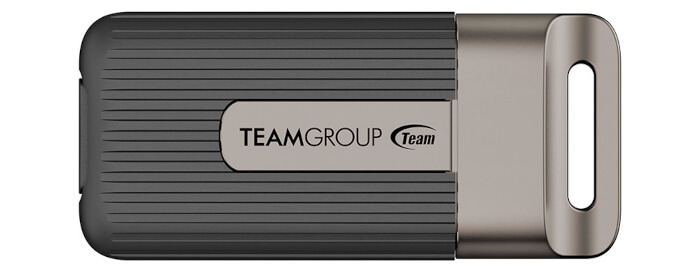Last Updated on August 31, 2025
Benchmarks
Benchmarks such as the open source KDiskMark utility help provide an insight into the performance of the direct-attached storage device. The results translate to the instantaneous performance numbers that consumers can expect for specific workloads, but make no reference to changes in behaviour when the unit is subject to long-term conditioning and/or thermal throttling.
KDiskMark uses four different access traces for reads and writes over a configurable region size. Two of the traces are sequential accesses, while two are 4K random accesses. I’m showing results for one of the sequential accesses (SEQ1M) and one of the 4K random accesses (RND4K).
I benchmarked the SSD using a desktop with an ASUS motherboard and Intel 15th generation CPU, 64GB of RAM and an NVIDIA GeForce discrete graphics card.
Here are the results for the PD20 1TB NVMe with the 15th generation machine. To put the results into context, we also benchmarked a couple of other USB 3.2 Gen2x2 devices, as well as a Crucial BX500 SSD placed in a portable enclosure, and a WD 2TB My Passport Portable HDD. For benchmarking purposes, the drives are used as storage only, with the operating system (Linux naturally) running on a separate drive.
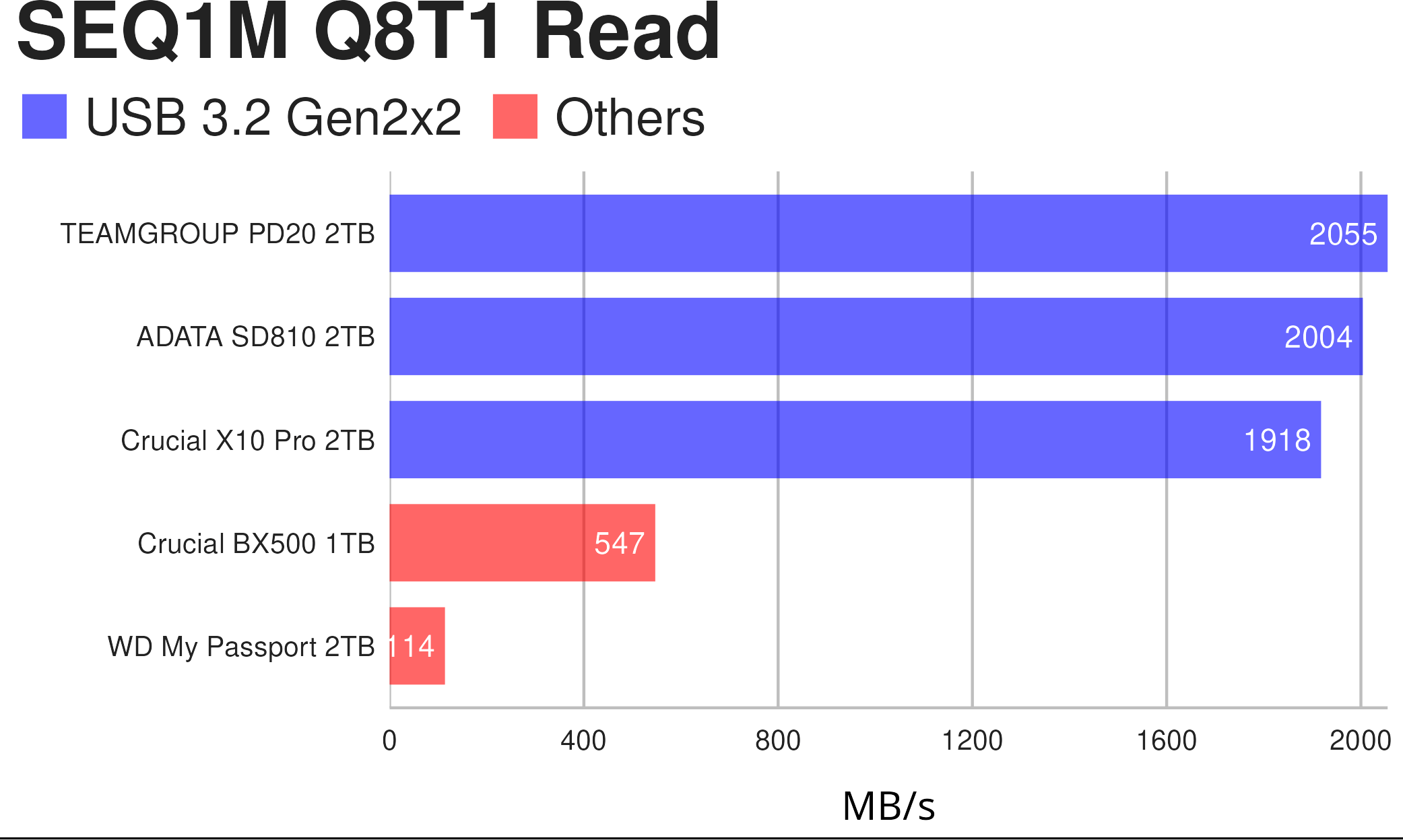
An impressive result for the TEAMGROUP PD20 which benchmarks slightly higher than its advertised maximum 2,000 MB/s read speed. This benchmark is useful for tasks such as high-resolution video editing.
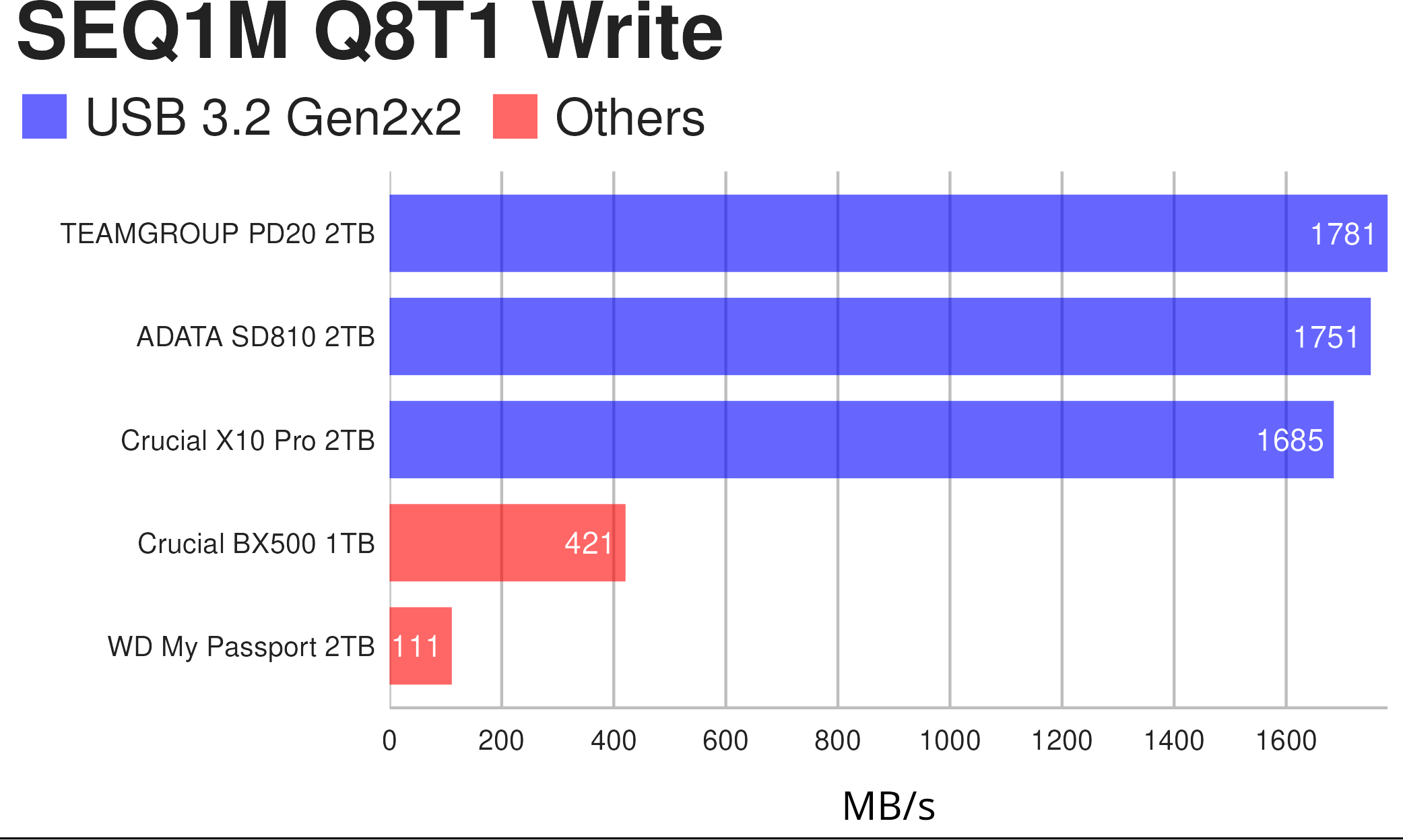
In this sequential test, the TEAMGROUP PD20 again fares slighter better than the other USB 3.2 Gen2x2 SSDs.
A drive’s rated write specifications are only part of the performance puzzle. Most external SSDs (just like their internal counterparts) implement a write cache, or a fast area of flash, programmed to perform like faster SLC, that absorbs incoming data. Sustained write speeds often suffer tremendously when the workload saturates the cache and moves over to the “native” TLC or QLC flash.
The PD20 also performs well on our big write test. The drive can write at its maximum speed (slightly under 1800 MB/s for 70 seconds before dropping into the 670s and settling eventually at 565 MB/s. This performance cliff exists on other external SSDs when the write cache is exhausted but the PD20 still maintains better sustained sequential writes compared to the Adata SD810.
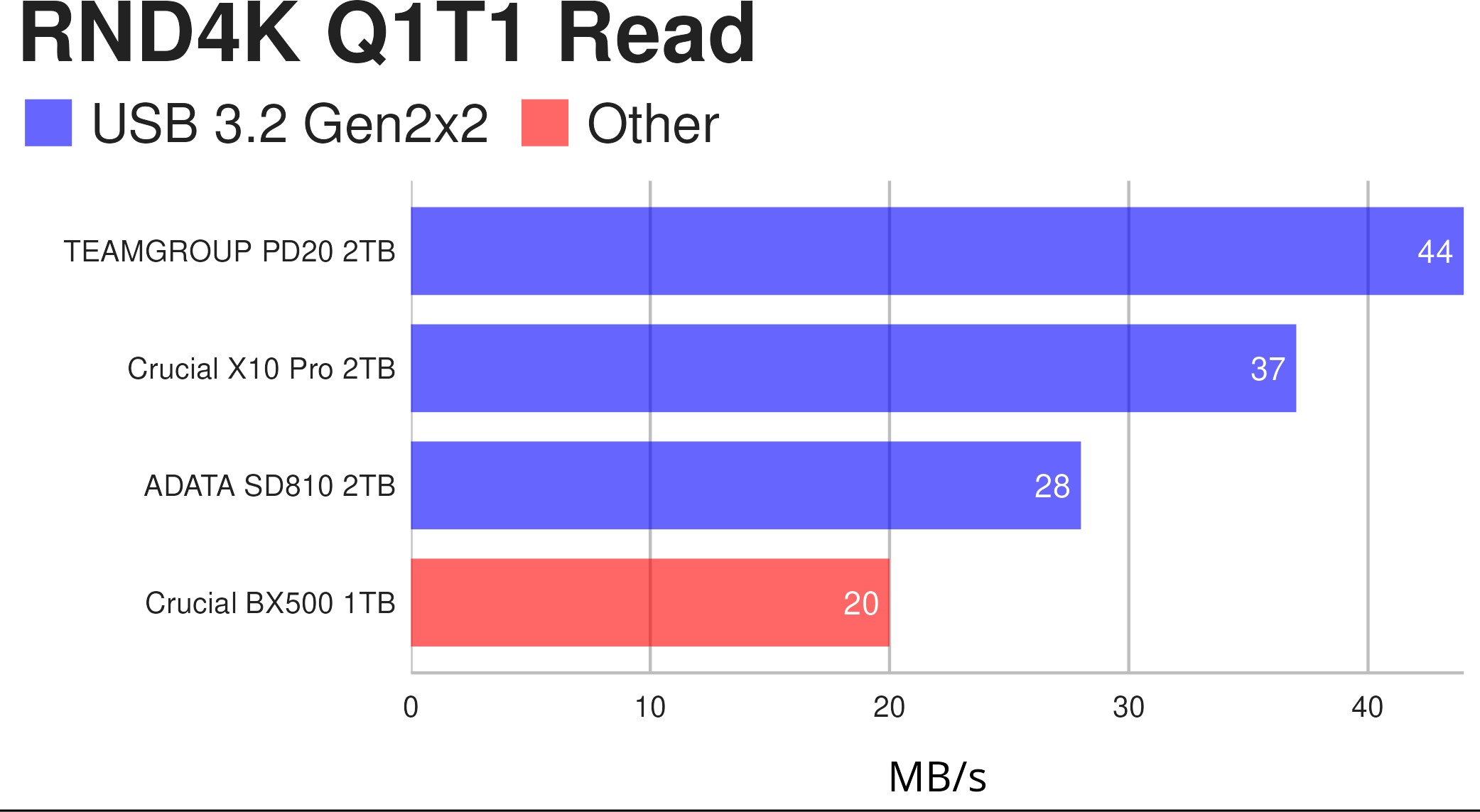
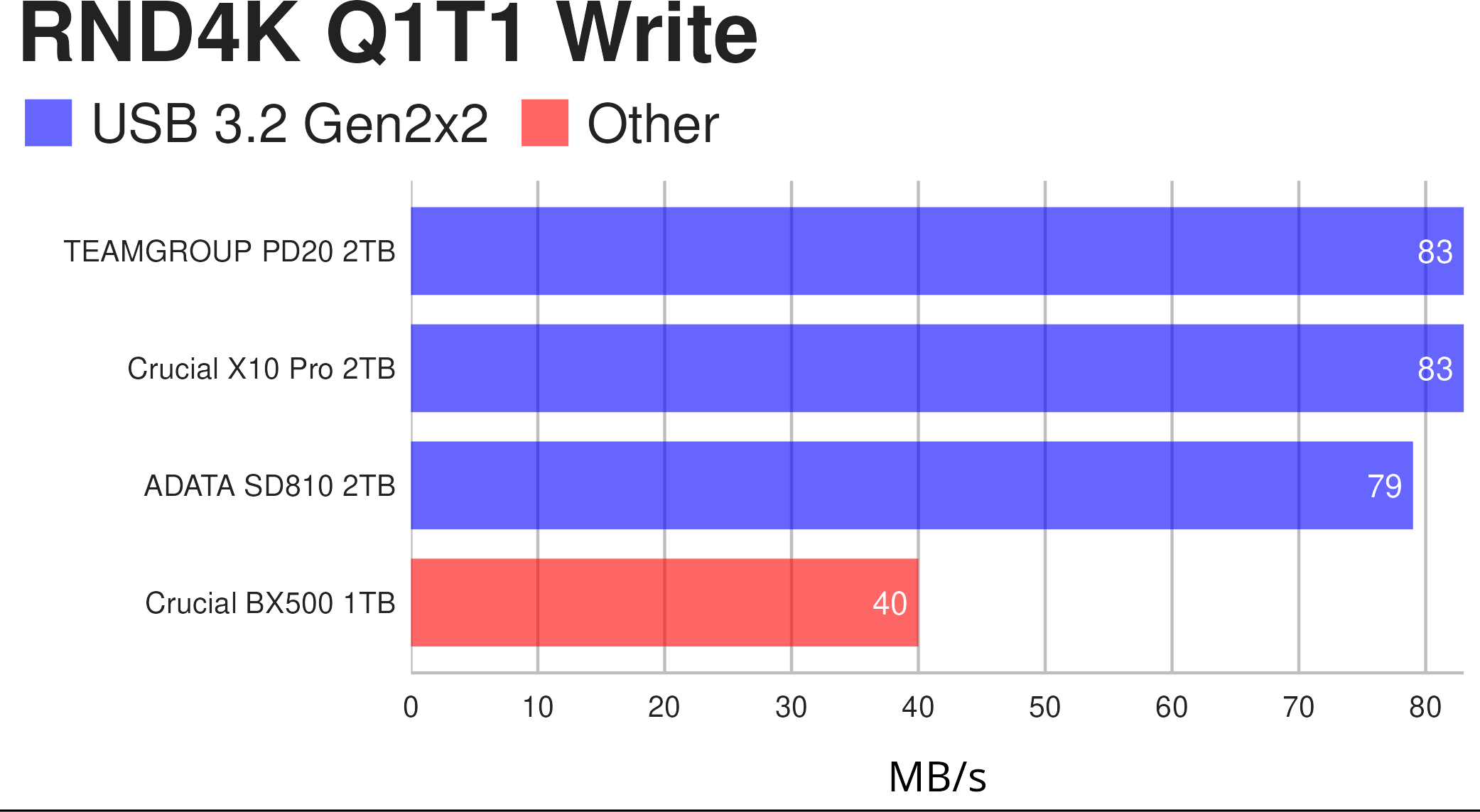
In small file performance, the PD20 offers good but not standout performance, coming around the same speed as drives from Crucial and ADATA. But the results are still impressive as the PD20 is significantly cheaper than the Crucial SSD. Low queue random operations are essential for daily usage, affecting work on multiple small files.
Pages in this article:
Page 1 – Introduction and Specifications
Page 2 – Benchmarks
Page 3 – Summary
